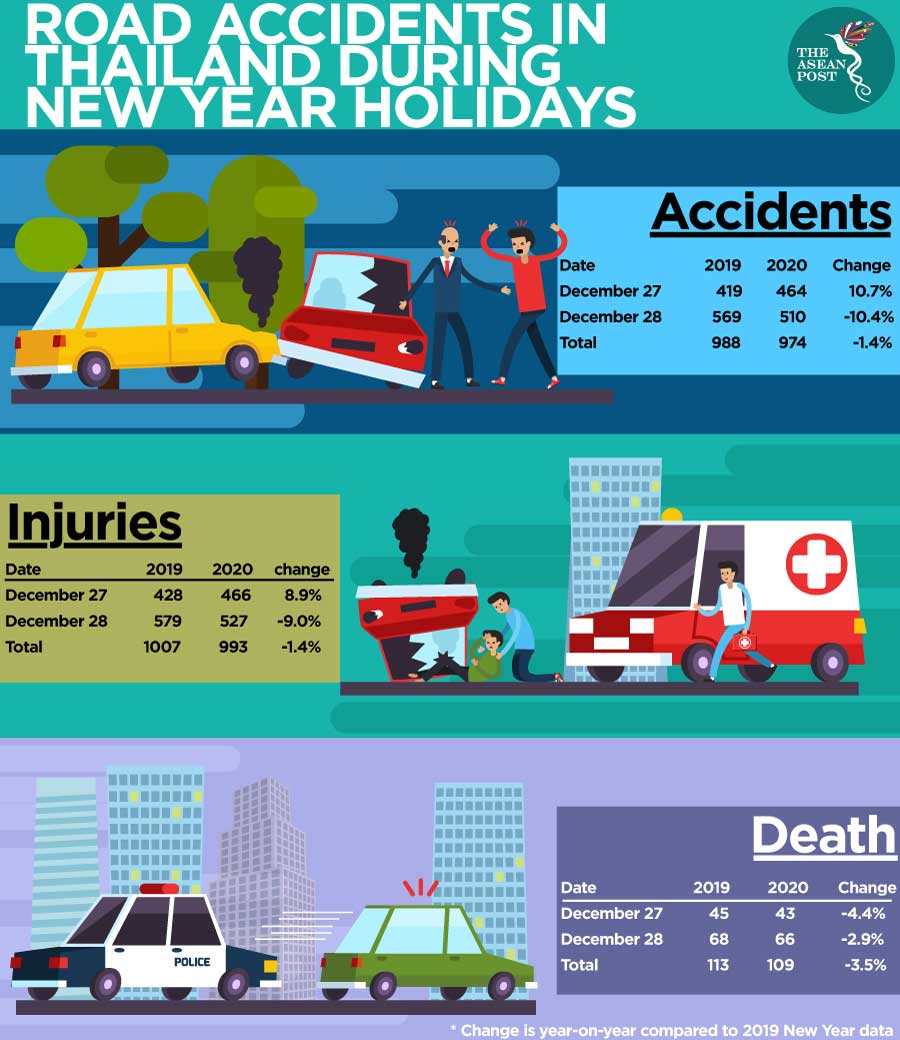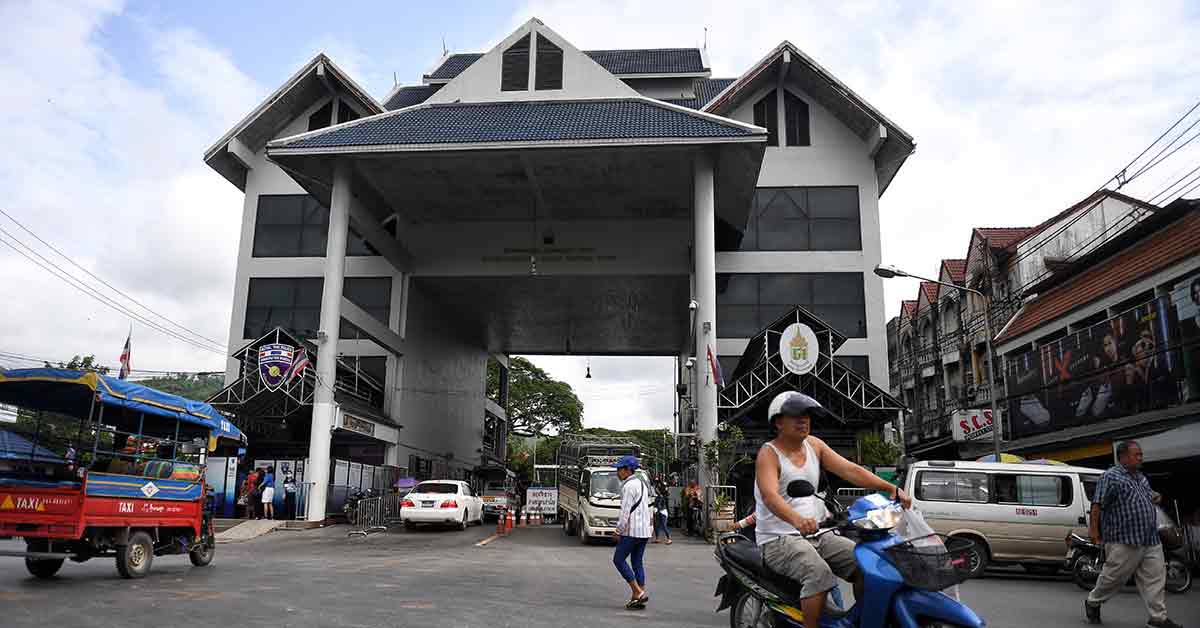Earlier this week, Thailand’s Transport Ministry revealed that only two days after Thais began their New Year holiday on 27 December, there had already been 974 road accidents. This is just another story highlighting country’s deadly roads.
The 974 road accidents led to 109 deaths and 993 injured. While these numbers – including the amount of road accidents – was a decreased compared to the same two-day period last year, the decrease was miniscule and the numbers are still devastating.
Local Thai media quoted Anon Lueangboribon, deputy permanent secretary for transport, as saying that on Saturday alone (28 December) there were as many as 510 traffic accidents in which 66 people were killed and 527 others injured.
Of the road accidents, most were caused by drink driving, resulting in 35.5 percent of the accidents, followed by speeding, resulting in 30 percent of the accidents. Meanwhile, motorcycles were involved in 64.6 percent of the incidents.
This isn’t the first time Thailand’s deadly roads had come under the spotlight. In a report by the World Health Organisation (WHO) in 2015, the organisation noted that Thailand had the world’s second-highest rate of road fatalities per capita. This was only surpassed by Libya which is war-afflicted and lawless.
Meanwhile, when it comes to per-capita motorcycle deaths, Thailand holds the number one spot.

Only a few months ago, British online news portal, the Independent, published an article on Thailand’s dangerous roads entitled “Why are Thailand’s roads among the deadliest in the world?”. In that September article, the Independent noted that the Thai government had vowed at a United Nations forum in 2015 to halve the number of road traffic deaths by 2020.
“With less than one year to go before the deadline, however, Thailand is a long way from fulfilling that promise, its roads still ranking among the world’s 10 most dangerous, with more than 20,000 preventable fatalities a year,” the article read.
The Independent suggests that what the government has not addressed is the country’s vast gap in wealth, saying this is the core issue that makes its roads so deadly, going on to explain that - unlike poorer countries - its roads are well paved and made for speed, and the cars driven by the rich and its growing middle class tend to be new and fast.
However, “many Thai families can only afford a single scooter or motorcycle, and high-quality helmets are a luxury for many, whatever the law says about them being mandatory to wear.”
Looking at the localities of where these accidents occur, there may be some strength in the Independent’s argument. According to the local Thai news report, the northern province of Lampang saw the highest number of accidents (21). The highest death toll, five, was reported in Nakhon Sawan province, which is on the way from Bangkok to the North. The province which saw the highest number of injured people, (26), was also Lampang.
Meanwhile, on the first two days of New Year holiday travel, Friday and Saturday, the highest number of accidents, 33, was reported in the southern province of Surat Thani. The highest death toll (six) was in the northern province of Chiang Rai and the Central Plain's Nakhon Sawan. The highest number of injured people, 37, was also reported in Surat Thani.
It is known that Thailand’s poorest provinces lie in the north. As for Surat Thani, while it lies in the south, it is still a rural province. The fact that the Transport Ministry also acknowledged that motorcycles made up the brunt of the vehicles involved in accidents also adds to the argument that it is largely the poor that are forced to face the deadly side of Thailand’s roads.
Earlier this year, The ASEAN Post published an article highlighting the fact that Thailand does indeed have the widest income inequality in ASEAN and one of the four worst performers in the world. Could this inequality, as the Independent argues, be one of the biggest reasons for Thailand’s roads being so deadly?
Related articles:
